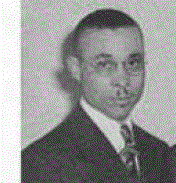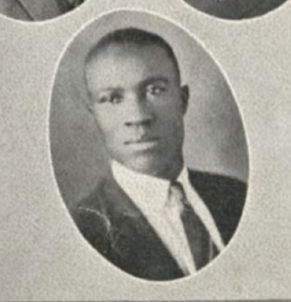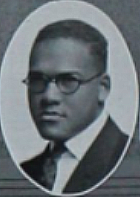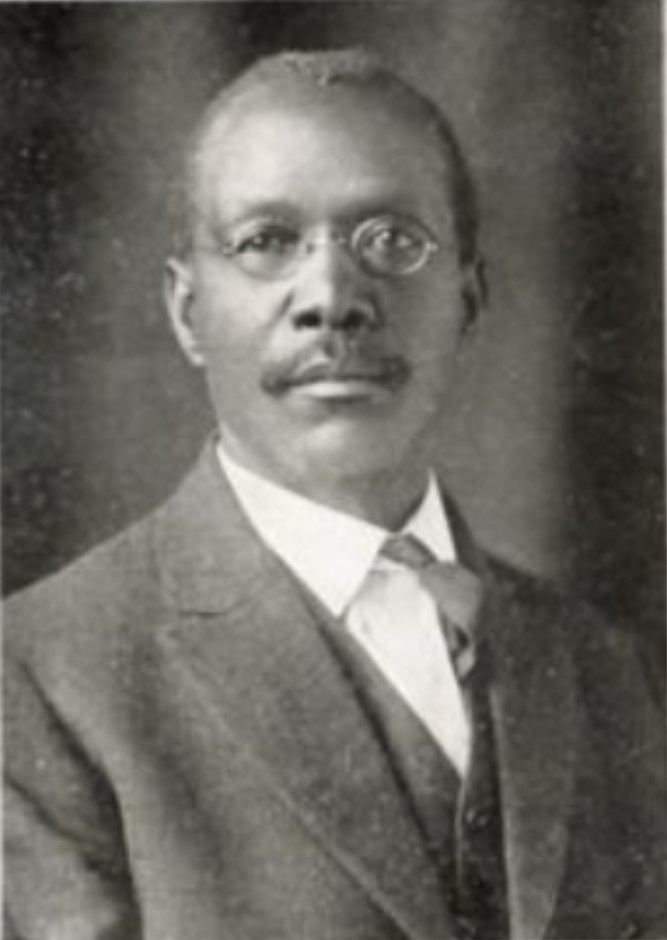By Brad Kuennen, Iowa State University Vet Med and Animal Science Librarian
Born October 10, 1901, in Washington, D.C., Patterson was the youngest of six children born to William Ross and Mamie Brooks Patterson. Tragically, both of his parents would die from illness before Patterson turned two years old.
When his oldest sister, Wilhelmina, graduated from the Washington Conservatory of Music sometime around 1908, she moved to Texas to start her career in music education taking young Frederick Patterson with her. She worked at several different schools in Texas and Oklahoma, and used any extra money she had to pay for her brother’s education. Eventually she landed a job teaching music at Prairie View State Normal School and Industrial College (now Prairie View A&M University) and Patterson, who had been staying with relatives up to this point, moved in with her and enrolled at the school.
It was at Prairie View that Patterson first became interested in veterinary medicine. During his junior and senior years, Patterson spent many hours with the young school veterinarian, Edward B. Evans, who had just earned his DVM from Iowa State College (now University). He encouraged Patterson to pursue a career in veterinary medicine and recommended Iowa State to him.
Patterson arrived in Ames, Iowa, during the late summer of 1919 and enrolled at Iowa State. Four years later, in the spring of 1923, he had earned his DVM. He accepted a position teaching agriculture at Virginia State College and worked there for nearly five years. While at Virginia State, Patterson received a fellowship from the Rockefeller Foundation General Education Board to pursue an advanced degree. He was granted leave from his teaching position and returned to Iowa State where he completed his M.S. in veterinary pathology in 1927. He returned to Virginia to take up his teaching role again, but was soon contacted by Tuskegee Institute (now University) about a teaching position there.
Patterson accepted the position to teach agriculture and animal science courses and also to act as the school’s veterinarian. He was again offered a fellowship by the Rockefeller Foundation General Education Board to pursue an advanced degree and this time chose Cornell University, where he completed his Ph.D. in bacteriology in 1932. Shortly after returning to Tuskegee, the Director of the Agriculture Division was murdered, and Patterson was put in charge of the agriculture program. When President Robert Moton announced his retirement, the Tuskegee Board of Trustees tapped Patterson to serve as the third president of the school. At his inauguration ceremony that fall, Patterson had just turned 34.
During Patterson’s tenure as president, Tuskegee would face severe budget problems due to the Depression and then a World War. However, he managed to grow the academic programs at the school, oversaw the transition of Tuskegee from a technical institute to an academically diverse university, and established a different approach to fundraising which positively impacted nearly all historically Black colleges and universities (HBCUs) in the country.
With the assistance of his mentor, Edward B. Evans, and a team of dedicated instructors, Patterson established Tuskegee’s School of Veterinary Medicine in 1945. It remains the only school of veterinary medicine at an HBCU and is estimated to have trained 70 percent of African American veterinarians in the United States. In addition, Patterson established a commercial aviation program in 1939, giving students the opportunity to earn a commercial pilots license. The school would also be home to a military aviation training program during the war whose pilots, the famed Tuskegee Airmen, would earn a stellar record and reputation. During his tenure, Patterson also oversaw the creation of the school of engineering and the program in commercial dietetics.
Sources
Biography available at HBCU Connections at Iowa State University : Frederick D. Patterson ( http://hbcuconnections.iastatedigital.org/Frederick_D._Patterson



